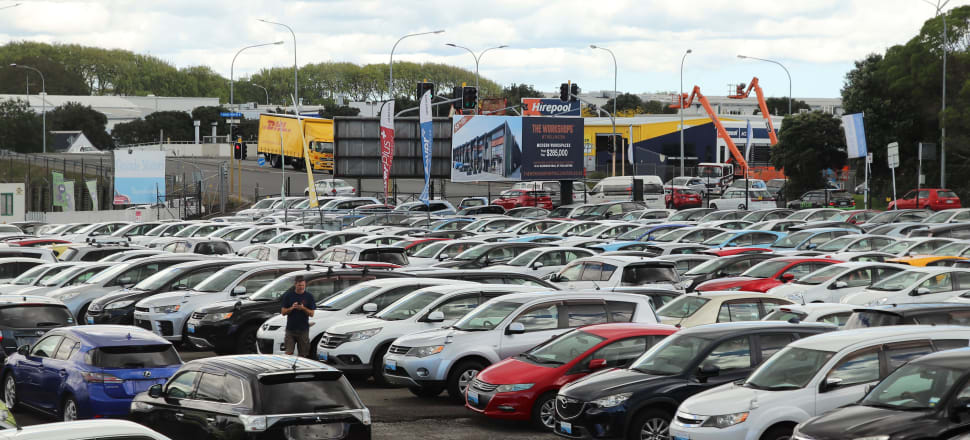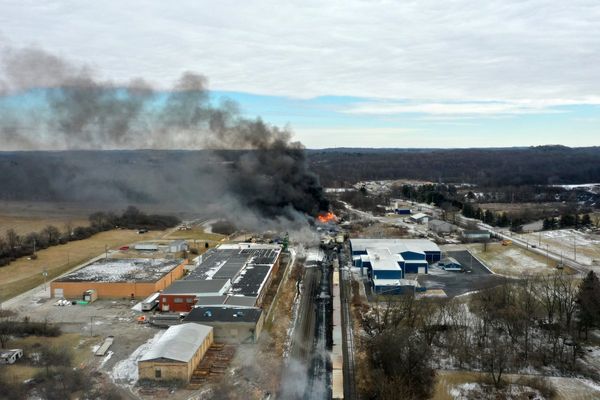
New vehicles imported to New Zealand may have to meet stricter air pollution standards from 2025, more than a decade after the same rules were introduced overseas
The Ministry of Transport has quietly launched a consultation on updating New Zealand's air pollution rules for imported vehicles, which could save as much as $6 billion in health and productivity losses over the next three decades.
Standards were last set in 2012, aligning with the Euro 5 rules adopted by Europe in 2009. The gap between New Zealand and its peers has widened in the time since then. Europe adopted the next generation of limits, Euro 6, in 2014. According to the transport ministry, New Zealand and Australia are the only developed countries yet to sign up to Euro 6.
The Government's proposal would see new imports of new car models face Euro 6 requirements from February 2025. New imports of existing models as well as existing models would follow a year later. Similar Euro VI requirements for heavy vehicles like trucks and buses would phase in from November 2024 to November 2026.
READ MORE: * Auto industry calls for stricter air pollution tests * Crackdown on diesel pollution could save billions
Under Euro 5, diesel cars can release 180 milligrams of nitrogen dioxide per kilometre driven. Euro 6 more than halves that, to 80 mg/km.
While the standard for petrol cars is ostensibly unchanged between the two rules (60 mg/km each), Euro 6 also comes with much more stringent tests to ensure real-world values are closer to the test values. A December 2021 study from Bulgaria found Euro 5 petrol cars emitted 91 mg/km on average in the real world, compared to 45 mg/km for Euro 6 ones.
Nitrogen dioxide is a potent pollutant which can cause asthma as well as respiratory and cardiovascular disease with long-term exposure. A modelling study released last year found a third of the population is exposed to unsafe levels of nitrogen dioxide, including more than half of those living in Auckland or Canterbury.
That same study attributed more than 2000 annual premature deaths and 8500 hospitalisations to nitrogen dioxide pollution from motor vehicles. The total social cost was estimated at $9.45 billion per year.
Alongside those findings, the Ministry of Transport commissioned a report from the researchers on the impacts of adopting Euro 6. As first reported on Newsroom in April, the report found New Zealand could save as much as $8 billion in avoided health and productivity losses by 2050 if Euro 6 was implemented for new vehicle imports.
The savings increase the sooner the adoption. The Government's proposed timeline falls between scenarios estimating $3.7 and $6.7 billion in gross benefits and $0.09 to $0.18 billion in costs.
In its consultation document, the ministry stated that importers and consumers aren't voluntarily purchasing Euro 6 vehicles, so new requirements are needed. As it stands, less than one in five new vehicles entering the fleet meets the Euro 6 standard, and they make up just 3 percent of the overall fleet.
This is particularly true for diesel vehicles, which produce the vast bulk of nitrogen dioxide pollution in New Zealand despite making up a minority of the vehicles in the country. About 45 percent of the total social cost can be attributed to diesel trucks and buses, 29 percent to diesel utes and vans and 8 percent to diesel cars. The remaining 18 percent is attributed to petrol cars, which make up three-quarters of all vehicles in the fleet.
The greater harm comes because it is harder to filter pollutants from the exhaust of diesel vehicles. Diesel vehicles are also more likely to release more pollution in real world experiments than when emissions-tested. The Bulgarian study of real world pollution found Euro 5 diesel cars actually emitted 766 mg/km, more than four times the legal limit.
"Euro 6/VI is the first standard that has been shown to significantly reduce harmful emissions from diesel vehicles in the real world," officials wrote in a Regulatory Impact Statement.
By phasing in the rule for light vehicles from 2025, the Government is also decoupling New Zealand's auto market from Australia's.
Most vehicles here are approved for sale based on Australian Design Rules (ADR) rather than the Euro system. The current ADR corresponds to Euro 5 and car importers have warned against moving faster than Australia, which isn't introducing Euro 6 for light vehicles until 2027 (though trucks and buses will face Euro VI from late next year).
"The majority of our vehicles are also approved for sale (homologated) to the Australian Design Rule (Australia’s version of the Euro standard), and re-homologating vehicle models to meet the Euro 6/VI standard, which is not required in Australia, could increase overheads significantly (by millions of dollars). Allowing sufficient lead time for vehicle importers to decouple from the Australian market would reduce the overheads inevitably passed on to consumers," officials warned.
This led them to recommend against a faster timeline for phasing in Euro 6 from 2024.
Lee Marshall, chief executive of the Motor Vehicles Association, told Newsroom last week the industry broadly "supports any measure that would see cleaner vehicles being brought into our country. I think with regards to classifications like Euro 6 and Euro 7, it's probably not a question of 'if', it's a question of 'when'. The critical thing is just to make sure that we get the timing right with that kind of change."
He spoke to Newsroom before the details of the ministry's proposal were revealed, but said New Zealand should continue to align its standards with Australia's.
Europe, the United States and China are already preparing to adopt the next generation of standards, Euro 7. If the Government proceeds with its proposal, it will still be phasing in Euro 6 when the EU has fully implemented Euro 7.
In the consultation, officials hint that the gap between New Zealand and overseas standards could be shortened, with Euro 7 put in place soon after Euro 6.
"Aotearoa needs to move quickly with Euro 6 so that it can look to adopting the next generation of standards sooner and maintain better alignment with other developed countries and major markets," the document stated.
It also asks submitters to weigh in on when Euro 7 should be implemented here.
Transport Minister Michael Wood told Newsroom it was important to prepare for Euro 7 as soon as possible.
"We’re committed to strengthening our emissions standards to protect the health of New Zealanders. Internationally, emissions standards continue to improve, with Europe now consulting on Euro 7 standards. We can’t afford to be left behind or we will be a dumping ground for the world’s most air polluting vehicles," he said.
The National Party's transport spokesperson Simeon Brown said they were supportive of Euro 6, as long as the industry was kept in the loop.
"National supports moving to Euro 6 standard over time. The Government must work closely with the industry to ensure that the standard is not ahead of what can be supplied, so there are not unintended consequences with people holding onto existing cars for longer," he said.
"The Ministry of Transport also needs to work closely with the industry to ensure that there is appropriately assigned equivalency between the different standards."







